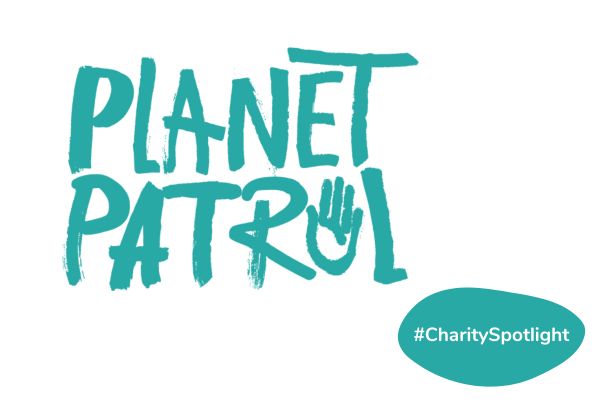Insights
INSIGHTS
All Topics
Building climate awareness into your charity
We look at the steps charities can take to start including climate awareness into their processes, communications, and strategy
When it comes to climate change, all charities, regardless of mission, have a vital role to play.
In the latter part of 2021, Social Enterprise Network Scotland and the Scottish Council for Voluntary Organisations released the Third Sector Net Zero Report. The study found that while charities want to do more to fight climate change, they are not yet taking action to do so.
A separate survey carried out by the Charity Finance Group (CFC) revealed that 84% of charities don’t have a net zero objective and only 14% currently report on their carbon emissions.
But the climate emergency affects everything and everyone. It poses a risk to all charities and organisations.
Luckily, building climate awareness into your charity couldn’t be easier. Charity Digital looks at some of the best ways.
Leadership and trustees
As charities continue to recover from the pandemic, there will be tensions between issues in the immediate future and those in the longer term. This is where Trustees are in a unique position.
Trustees can communicate to leaders and policy makers that taking steps to combat climate change is essential to a charity’s purpose and survival in the short term.
For example, unsustainable practices are garnering larger and more unified backlashes for charities. And, now more than ever, the public is looking to charitable organisations to set the example and lead the way on action against climate change.
By urging leaders to commit to principles, such as those outlined in ACEVO’s Climate Principles or Funder Commitment, trustees can ensure charity leaders are committing to acknowledging the crisis, setting clear goals, and taking action in a clearly defined step by step plan.
Collaboration
Two heads have always been better than one. And when it comes to building climate awareness into your everyday operations, environmental and social charities have a lot to benefit from by joining forces and sharing resources.
Fit for the Future is a cross-sector environmental sustainability network made up of 102 organisations. ‘Powered by people and practical solutions’, the network is designed to let members share and collaborate on best environmental practice.
In 2016, Fit for the Future helped members save an estimated £1.2 million and generate 32.1GWH of renewable energy, enough to power 8,834 homes for a year. And member organisation Wildfowl and Wetlands Trust, have seen a 170% increase in renewable energy generation since 2015. By 2019, their CO2 emissions reduced by 80 tonnes, saving £1,000 a year.
Collaboration is particularly important for smaller charities looking for ways to create a sustainable long-term future.
For example: sharing an office space with another charity can reduce overheads and save energy. Sharing resources has benefits too. If you are a charity that uses vans and buses (but only on certain days) sharing vehicles can help combat congestion and cut CO2 emissions.
More sustainable for you, more sustainable for the planet.
Working environment
There are many small but easy ways to incorporate climate awareness into your work environment. From recycling and using energy efficient lights and appliances, to reducing single-use plastic and turning off computers at the end of the day.
A step further might be to start including a climate awareness inspection as part of your purchasing routine. For example: is a supplier using recycled materials? Do they use green energy or have a focused environmental standard?
But bigger steps might include becoming more accountable for your organisation’s carbon footprint or investing in an environmental management system (EMS).
There are several free carbon footprint calculators that can help you to measure your carbon footprint. Conservation charity WWF has an online calculator, or you can use the excel based GHG Emissions Calculation Tool.
An EMS can help develop an organisation while decreasing waste, saving energy, and reducing the environmental impact of growth. It can also make your charity more appealing to donors.
The BSI offers a phased implementation, which is perfect for smaller charities or charities with limited resources.
Digital footprint
The pandemic changed working conditions, but our move from the office to the bedroom had surprisingly little impact on the environment. It is estimated that the IT sector is responsible for more than 2.8% of our global greenhouse gas emissions.
There are numerous tools that can help charities calculate the eco-friendliness of their website. And many ways to combat and reduce its impact on the environment.
For example, by reducing the number of clicks it takes to reach your most important/popular content will reduce the number of pages loaded and energy used. Alternatively, consider minimising the use of non-system fonts. Non-system fonts require load time and consequently use more energy than system fonts.
The Sustainable Web Manifesto is a great starting place for charities looking to reduce their digital footprint.
Communications
Not only do effective comms provide a clear way to show the public what you are doing to combat climate change, they can also provide opportunities to diversify your content, and keep yourself accountable. Voluntary Action Harrow have a sample template for charities looking to create and publish a sustainability policy on their website.
In terms of content, plan ahead for key calendar moments, such as Earth Day, World Wildlife Day, and World Oceans Day, and tailor communications to suite these themes. Go green for email newsletters, for example, or update your logo on social media (but be aware of greenwashing).
Remember, messages about combatting climate change should be positive, hopeful, jargon-free and easy to understand. Images should be used in a responsible and relevant way.
Elaine Taylor
More on this topic
Recommended Products
13 May 2024by Josie Sparling
Charity Spotlight: Lizzie Carr, Founder of Planet Patrol
13 May 2024by Laura Stanley
Webinar: Bringing digital into the boardroom
10 May 2024by Laura Stanley
Webinar: A charity guide to Meta Quest VR
Our Events
Webinar: A charity guide to Meta Quest VR
Join us on the 30th of May, where we will explain more about how VR technology works and how it can help charities, hearing from organisations where the technology has already made a difference.
We use cookies so we can provide you with the best online experience. By continuing to browse this site you are agreeing to our use of cookies. Click on the banner to find out more.

















